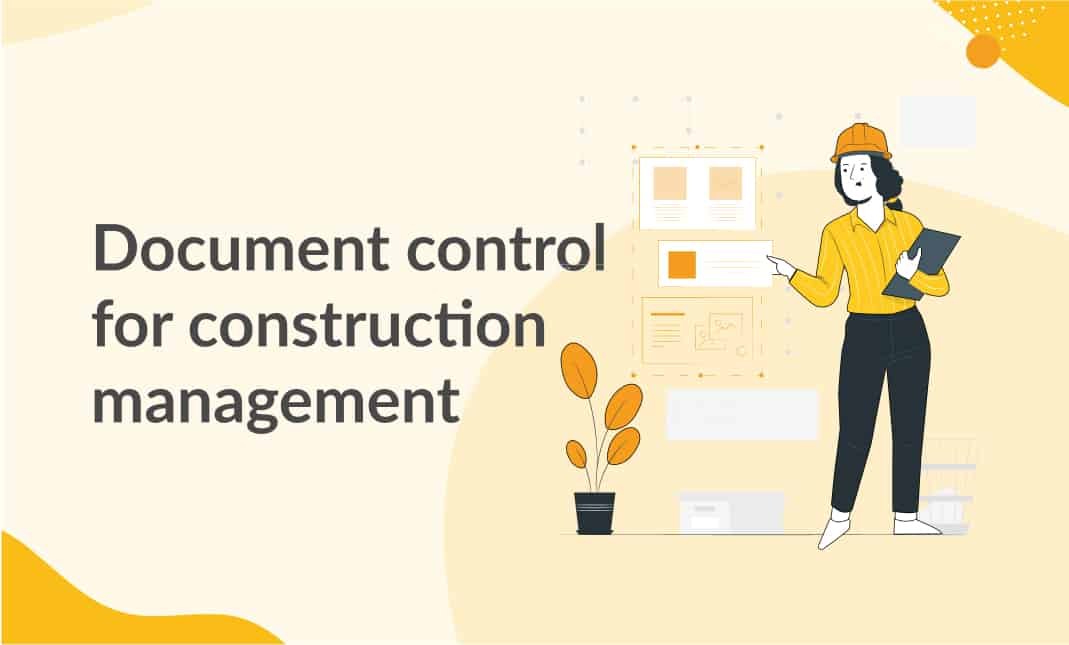Achieving Seamless Job Shipment: Engineer's Comprehensive Approach to Construction File Administration
In the world of style and construction, the meticulous orchestration of project elements is vital to success. One crucial aspect frequently undervalued is the administration of building and construction records, which functions as the foundation of every task. construction document management. As architects navigate the complexities of control, layout, and implementation, an extensive approach to record administration becomes a linchpin for attaining smooth job delivery. By studying the subtleties of this process, revealing the crucial aspects, and checking out innovative technical options, architects introduce a pathway towards enhanced effectiveness and collaboration within task teams. The blend of collaboration, accuracy, and technology creates the foundation of an effective architectural undertaking, elevating the value of a structured file monitoring technique.
Relevance of Construction Record Monitoring
Efficient building and construction record management plays a vital function in guaranteeing project success by facilitating smooth communication and organization throughout the construction procedure. By preserving current and exact building documents, engineers can successfully communicate with professionals, subcontractors, and other stakeholders associated with the job. These documents offer as a reference factor for all celebrations, guaranteeing that everyone is working from the same collection of information and reducing the chance of mistakes or misconceptions.
Furthermore, appropriate file management can enhance task performance, lower pricey delays, and eventually lead to the successful conclusion of building and construction tasks. Engineers who prioritize construction document monitoring established a strong foundation for task success and show a commitment to delivering high-quality outcomes.
Secret Aspects for Reliable Paperwork

Offered the essential role that accurate and organized construction documentation plays in ensuring project success, it is necessary to determine essential elements that add to effective documents monitoring. Concise and clear interaction is extremely important. All stakeholders have to recognize the paperwork demands and be able to access and analyze the details quickly. Establishing standard themes and procedures ensures consistency throughout all project files. This consists of calling conventions, file structures, and revision control to avoid mistakes and confusion. Finally, normal evaluations and updates are important to keep paperwork reflective and present of the task's development. This practice assists recognize any disparities or changes that require to be addressed immediately. Last but not least, executing a durable document administration system that enables version control, gain access to constraints, and audit routes considerably boosts the organization and safety of task documentation. By integrating these crucial aspects into building paper monitoring techniques, engineers can simplify procedures, lower mistakes, and inevitably add to the effective distribution of tasks.
Utilizing Technology for Record Organization
Leveraging innovative electronic devices and software program systems contributes in enhancing the company and ease of access of building and construction paperwork. Architectural companies can streamline their record management procedures by executing specialized software program created for the construction market. These devices provide attributes such as version control, cloud storage space, and collaborative modifying capacities, allowing staff member to work with records concurrently and ensuring everybody has accessibility to the most up-to-date info.
One trick benefit of using modern technology for file company is the capacity to create a centralized database for all project-related documents. By storing files in a safe electronic environment, architects can quickly look, recover, and share info with stakeholders, lowering the threat of version conflicts or misplaced data. Furthermore, progressed software program remedies frequently integrate metadata tagging and indexing performances, enabling individuals to classify records successfully and fetch them quickly when needed.
Collaborative Methods With Job Groups
To maximize task end results, engineers need to welcome collective techniques when collaborating with task groups to make certain smooth interaction and sychronisation throughout the building and construction procedure. Partnership with project teams is essential for architects to properly take care navigate to this website of building tasks. construction document management. By cultivating open communication and team effort among all stakeholders, architects can streamline decision-making procedures, address potential problems proactively, and guarantee that everyone is straightened with the job goals
Architects must develop clear lines of communication with engineers, service providers, customers, and other essential staff member from the outset of the project. Routine conferences, progression updates, and feedback sessions ought to be arranged to maintain every person educated and engaged. Utilizing collective job administration devices can additionally facilitate real-time information sharing and document partnership, improving transparency and efficiency.

Ideal Practices for Document Version Control

Final Thought
In final thought, reliable building and construction document administration is critical for achieving seamless job distribution (construction document management). It is vital for engineers to execute finest practices in file administration to effectively navigate the complexities of building jobs.
Effective building file administration plays a vital function in making sure job success by promoting smooth interaction and company throughout the building process. Additionally, proper document management can enhance task performance, minimize expensive delays, and ultimately lead to why not find out more the effective conclusion of building and construction jobs.To optimize project end results, engineers see here need to accept collaborative methods when working with task groups to guarantee seamless interaction and sychronisation throughout the construction procedure. Partnership with job teams is essential for engineers to efficiently take care of building projects.In the world of collaborative building and construction job administration, maintaining precise control over record versions stands as a crucial technique for making sure job integrity and communication.